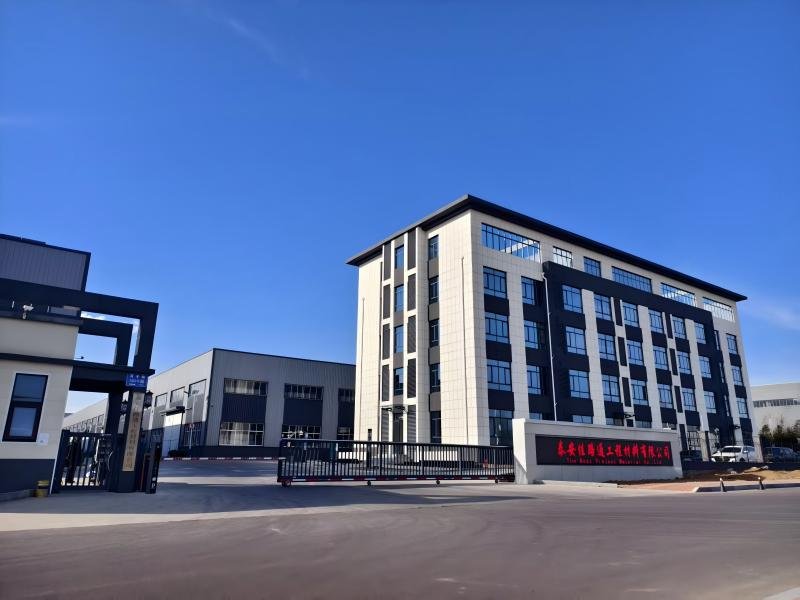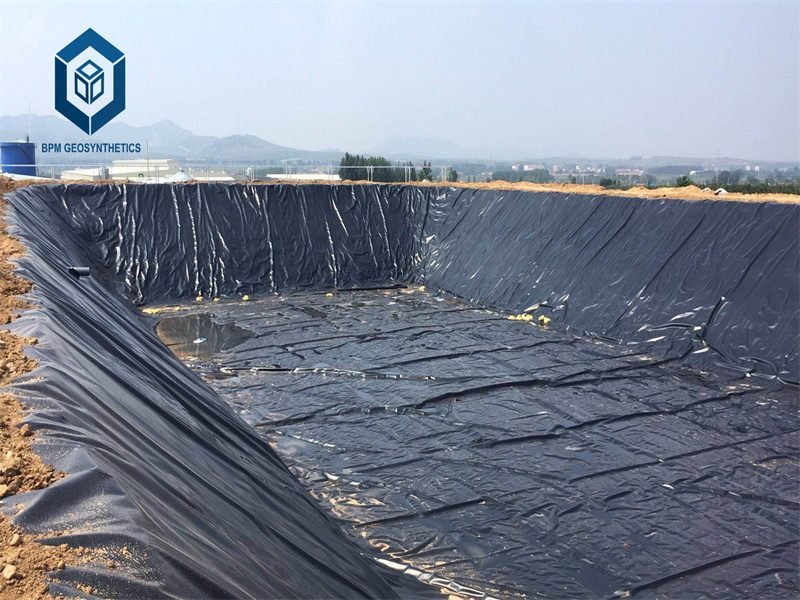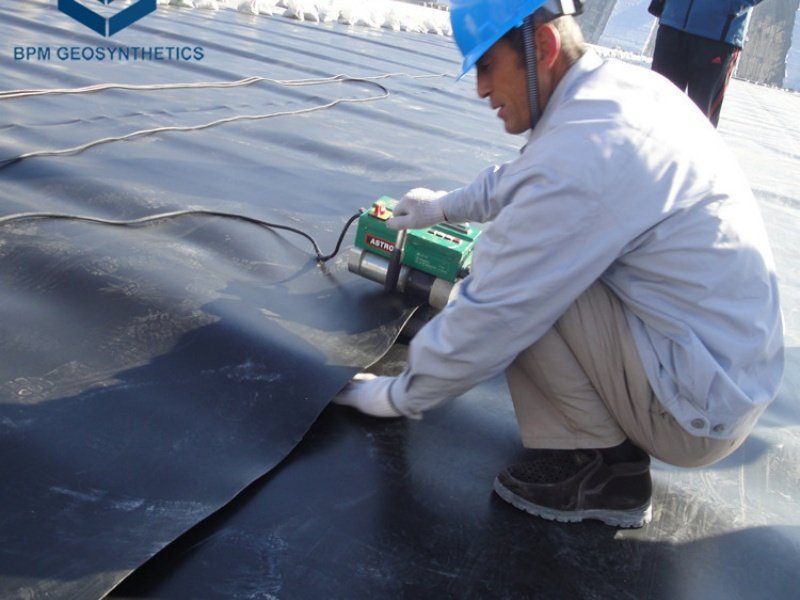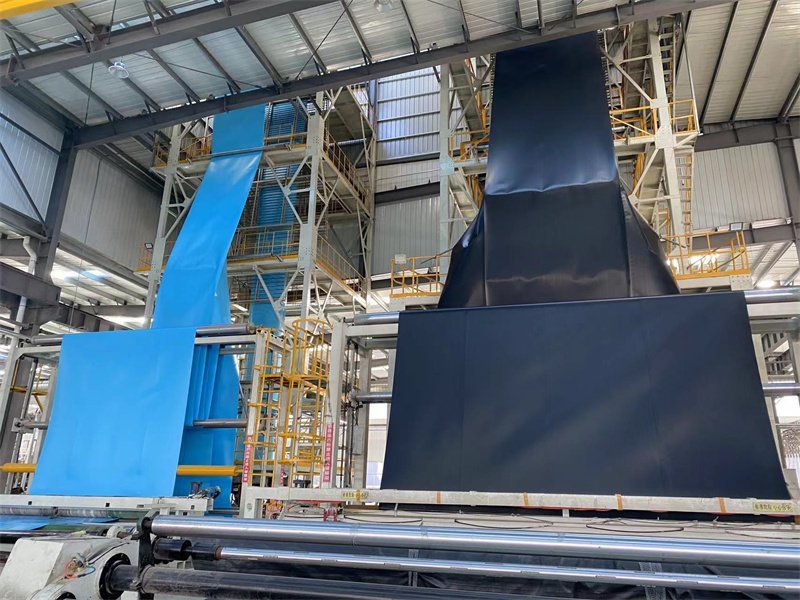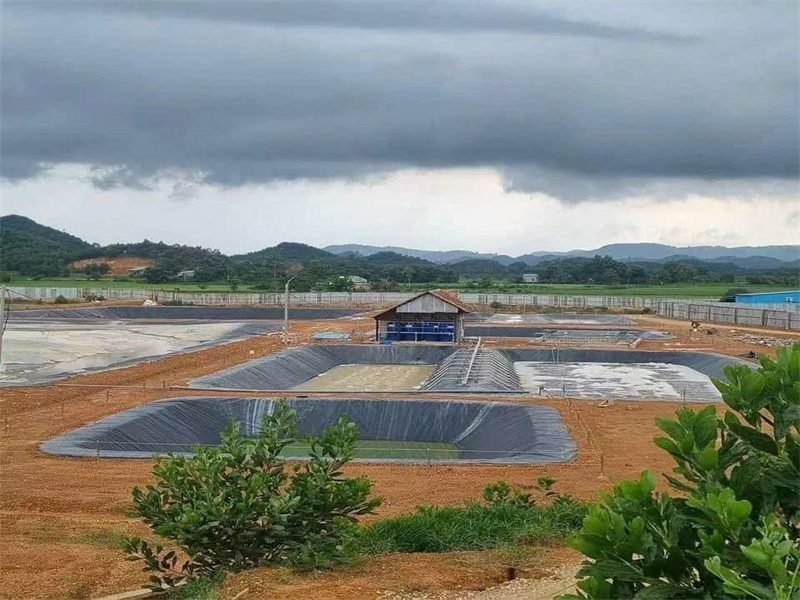Geomembrane liners are widely recognized for their impermeability, durability, and versatility in water containment applications, ranging from reservoirs and landfills to aquaculture ponds. However, despite their popularity, these liners present several significant disadvantages that must be carefully considered during project planning and execution.
Geomembrne Liner is a polyethylene material manufactured through advanced extrusion technologies like automatic blowing film production line and flat die production line . It is designed as a continuous, impermeable, and flexible liner primarily used for containment and waterproofing applications. The material with 100% virgin material , adding carbon black , antioxidant , anti-aging and UV resistance component . ensuring durability and resistance to environmental stressors. Its production adheres to international standards such as ASTM, ISO, and GRI-GM13, guaranteeing high tensile strength, puncture resistance, and UV stability. Geomembrane include smoonth geomembrane , Textured geomembrane , HDPE LDPE LLDPE geomembrane .
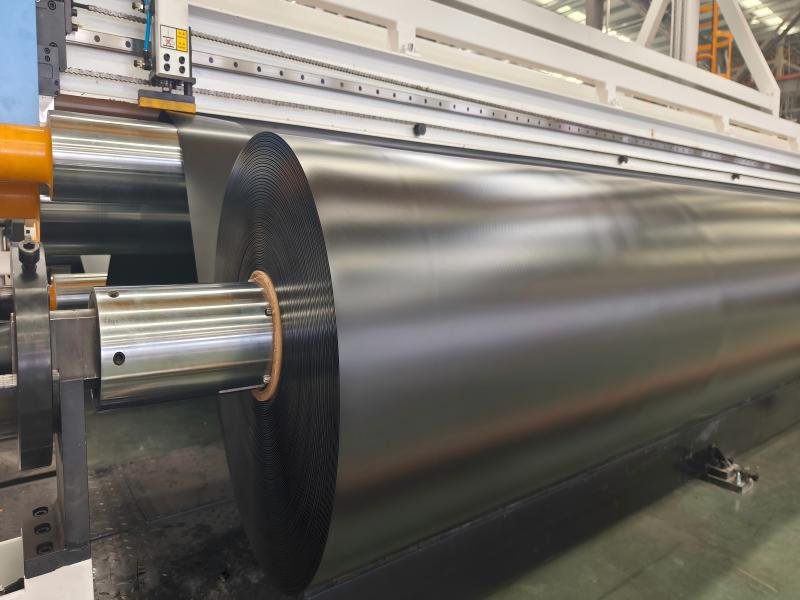
2 What Are Disadvantage of Geomembrane Liner for Water Containment
Geomembrane liners are frequently used in water containment projects for their excellent impermeability, but they also have several disadvantages.
1)Susceptible to physical damage.
Geomembrane liners are susceptible to punctures by sharp objects. For example, in a reservoir impoundment project, the foundation surface was not thoroughly cleaned, containing gravel and sharp rocks. This caused the geomembrane to be punctured multiple times during installation and subsequent compaction. A summary of frequently asked project quality issues indicates that uneven cushioning or contact with sharp objects is the primary cause of geomembrane damage. This not only requires rework during construction, increasing costs and delays, but can also lead to undetected leaks after the project is operational, compromising water storage effectiveness.
2)High welding quality requirements.
Welded joints are a weak link in geomembranes. A landfill leachate storage tank used a geomembrane liner with stringent design requirements. However, due to unskilled welders, the overlap width of the welds was only 5 cm, resulting in inadequate welding and leakage. The leak was located underground, making it difficult to locate and repair. Leachate leaks not only increased treatment costs but also posed a serious risk of environmental pollution.
3) Aging Issues
Geomembranes are susceptible to aging, shortening their service life. In one open-air water tank project, the sun-exposed portions of the geomembrane liner showed significant degradation after several years, becoming brittle and losing their elasticity. A subsequent inspection report from the project noted that UV exposure had caused the exposed geomembrane to become “as brittle as a potato chip, breaking with the slightest step.” In such cases, even minor external forces, such as impact during cleaning operations, can cause the geomembrane to rupture, compromising the safety of the water tank. Furthermore, some geomembranes can deform or lose their elasticity in high-temperature environments, similarly impacting their performance.
4)Weak Chemical Resistance
Geomembranes may lack chemical resistance when used to carry certain chemically laden water. For example, in industrial wastewater tanks lined with geomembranes, if the wastewater contains acids, alkalis, or heavy metals, the geomembrane’s impermeability will gradually deteriorate over time. Prolonged exposure to “chemically rich environments” such as high salt and heavy metals can weaken the geomembrane, ultimately leading to rupture or leakage. Reports indicate that industrial wastewater, similar to a “chemical hot pot,” can cause “chronic poisoning” of geomembranes, and leakage can cause serious environmental pollution.
5) Maintenance is costly and difficult.
If a geomembrane liner fails, maintenance can be tedious and costly. A 0.375 mm thick low-density polyethylene (LDPE) geomembrane was used as the cap layer for a landfill covering approximately 16 hectares. After several years, the calculated moisture balance began to deviate, likely due to the air vents installed in the geomembrane. Subsequent investigations also revealed unexpected gaps. Repairing these issues requires specialized inspection and equipment technicians, and the work is complex, resulting in significant additional costs for facility operations and management.ns.
6)Temperature Sensitivity
High-density polyethylene (HDPE) liners are temperature-dependent, softening at high temperatures (above 60°C) and becoming brittle in cold climates (below -20°C). In a 2022 Canadian reservoir project, the HDPE liner installed in sub-zero winter conditions cracked due to thermal shrinkage, leading to leaks and requiring partial replacement. Conversely, in tropical regions such as India, HDPE liners in open-air reservoirs soften in high summer temperatures, causing deformation and reducing puncture resistance. These temperature-related challenges require site-specific material selection; alternatives such as EPDM are often preferred in extreme climates.
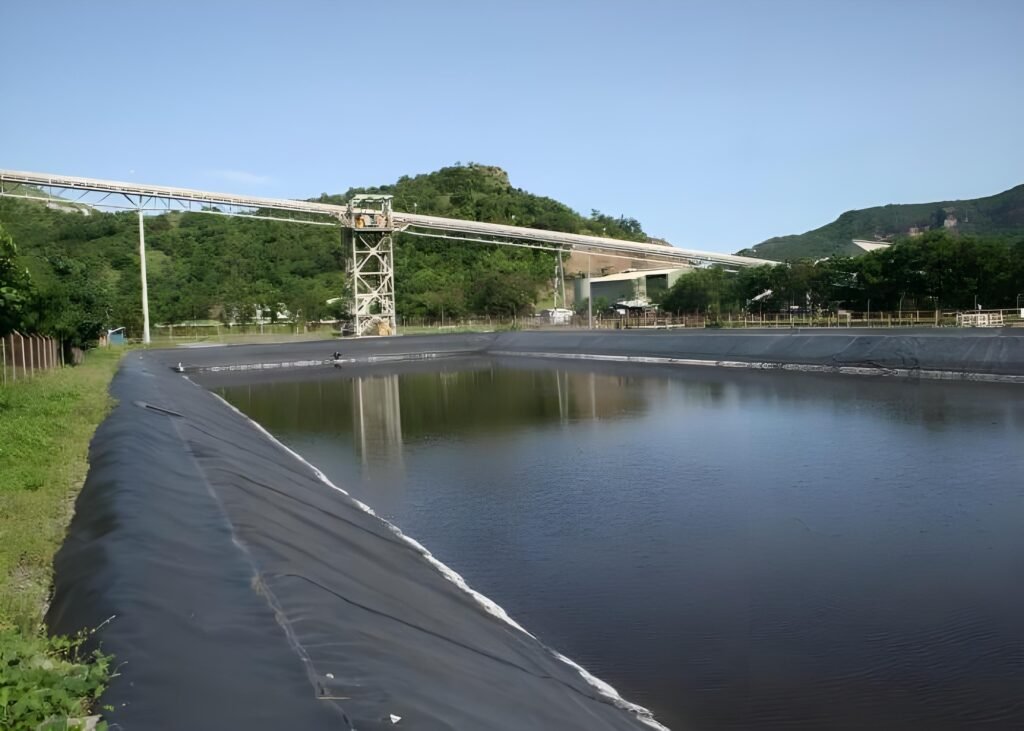
3 key recommendations of geomembrane liner for water containment
While geomembrane liners offer excellent waterproofing, their drawbacks—such as puncture susceptibility, thermal expansion, UV degradation, high installation costs, and chemical compatibility issues—must be carefully considered. Proper material selection, installation techniques, and maintenance are crucial to mitigating these risks. Failure to address these drawbacks has proven to be costly repairs, environmental damage, and operational disruptions. Engineers and project managers must weigh these limitations against other solutions, such as compacted clay liners and geosynthetic clay liners, to ensure long-term performance.There are serveral key recommendations:
Use protective geotextiles to prevent punctures.
Select appropriate liner materials based on environmental conditions.
Ensure proper installation and quality control (e.g., seam testing).
Consider covering exposed liner to reduce UV degradation.
Develop a long-term maintenance and inspection plan.
1)Geomembrane liners offer unparalleled impermeability, but they are not universally suitable. Their drawbacks—susceptibility to chemical corrosion, thermal sensitivity, high cost, and environmental impact—require rigorous site analysis, quality control, and long-term maintenance planning. Engineers must weigh these drawbacks against the specific requirements of their projects and, when necessary, choose alternatives such as PVC or reinforced concrete. Advances in materials science may enable innovations in biocompatible and self-healing geomembranes to overcome current limitations, but until then, careful application remains crucial.
2)As for geomembrane liner manufacturer , BPM was established in 2010 and has always been committed to the production,research and development,sales and service of geotechnical materials.With high-quality products and professional sales and after-sales teams,the products have been sold to more than 100 countries and regions in the world.The current products have obtained the EU CE certification and GLP laboratory certification.The main products have passed the IS09001 quality management system,IS014001 environmental management system,ISO45001 occupational health system certification,and passed Soncap,SASO and BV certifications and SGS and Intertek tests.The products have reached the world-leading level.The company’s products are widely used in aquaculture,soil erosion resistance,drainage systems municipal engineering,mining,gardening and landscaping,etc.We have also been adhering to the concept of reform and innovation ,focusing on quality,and relying on industry expertise to provide customers with the best solutions for engineering projects,providing more flexibility for cooperation between the two parties.Let us work together to create brilliance.
